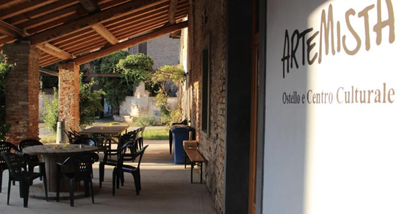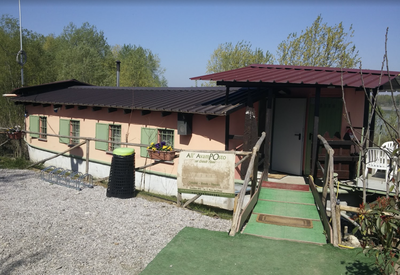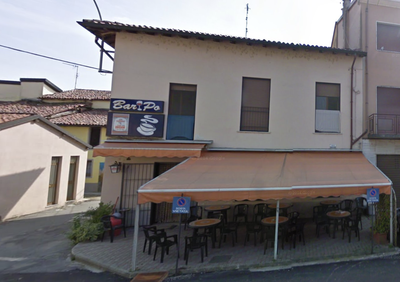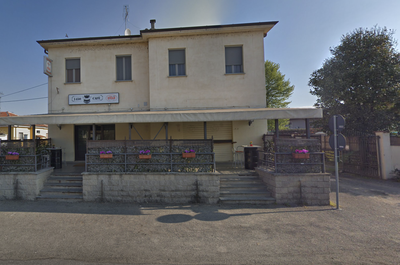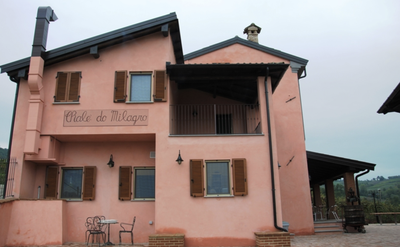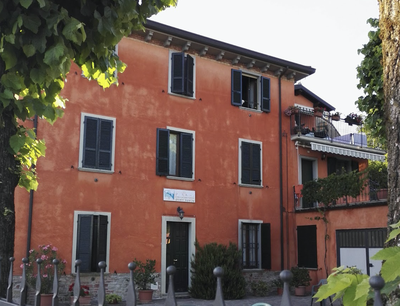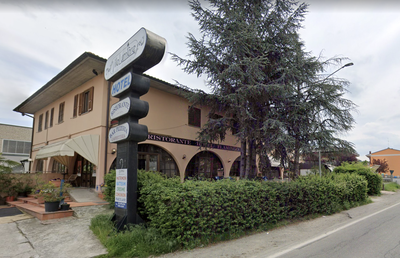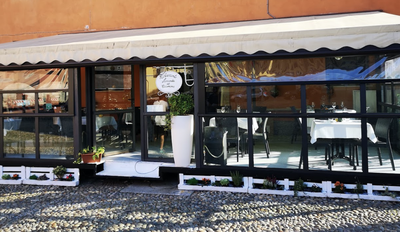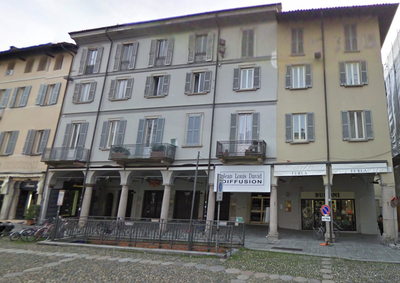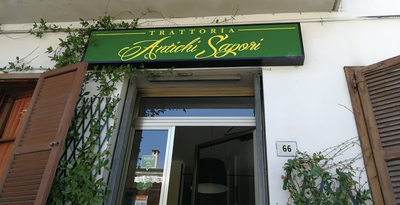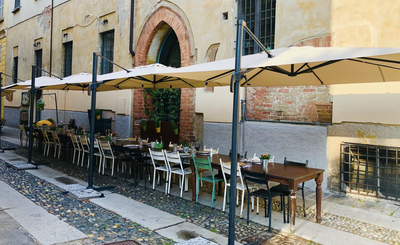Pavia to Pometo

Lombardia
6. Pavia to Pometo
Medium
7h
62km
+1309m
-882m
Step
Embed this item to access it offline
The first part in the Po plain is relatively flat and calm except for the crossing of the river on a bridge with high traffic. Immediately after this cut, the relief becomes more and more accentuated with small roads that rise up in the heart of the vines mainly.
19 points of interest
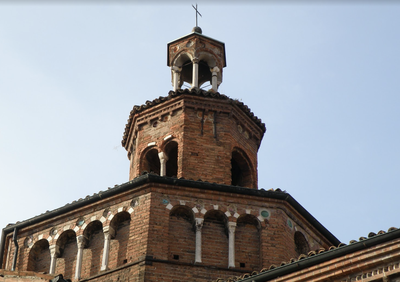
Basilica San Teodoro St ColumbanBasilica of San Teodoro
The basilica was built on an ancient early medieval church dedicated to Saint Agnes, built in the Lombard period in the mid-eighth century, led by the monks of San Colomban de Bobbio. After the transfer of the relics, the basilica took the name of St. Theodore. The church stands on a natural terrace sloping towards Ticino in an area of the city once inhabited by fishermen, boatmen and traders who used to operate along the river. It is likely that business associations in these trades played a decisive role in the construction of the church dedicated to the saint they venerated as patron saint and who was Bishop of Pavia in the mid-eighth century, during the transition from the Lombard to the Carolingian regime. The church was remodelled in 1510 and 1692-1693. Finally, it was restored to its original form with the restorations of 1887 and 1904-1909.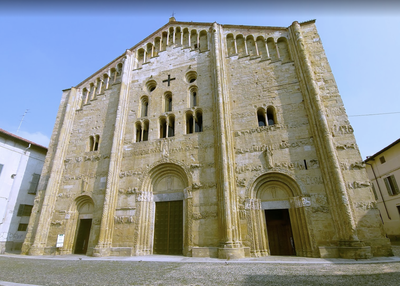
Basilica San Michele Maggiore CulturalBasilica of St. Michael Major
The first religious building built on the site is the chapel of the Lombard palace (part of which remains in the form of the base of the nail of the current basilica). A first church dedicated to the Archangel Michael was built on its site, but it was destroyed by a fire in 1004. The current construction began at the end of the 11th century (crypt, choir and transept) and was completed in 1155. The aisles of the nave, originally with coarse-edged vaults, were replaced in 1489 by four rectangular vaults. The basilica was the site of many historical events, such as the coronations of Louis III (900) and Frederic Barbarossa (1155). The Basilica of San Michele Maggiore (St. Michael Major) is one of the best examples of Lombard Romanesque style.
Ex chiesa San Colombano St ColumbanFormer church of San Colombano Maggiore
The old church of San Colombano Maggiore was built in the first half of the 13th century. Suppressed in 1565, it was then used as a warehouse but retains a large part of its central nave and left divided by pillars. The façade is practically intact and very original, with new elements compared to the Romanesque churches of Pavia. Now used as a private residence, it can only be visited from the outside.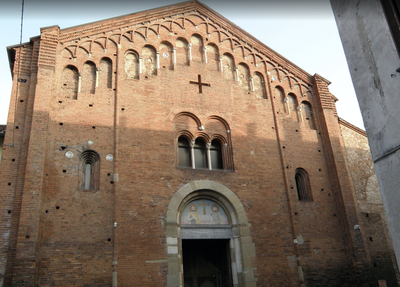
Chiesa SS Primo e Feliciano CulturalChurch of Saints Primo and Feliciano
The church of Saints Primo and Feliciano was built in the second half of the 12th century. Originally, it was presided over by a collegiate church of canons who, in 1354, entered the Congregation of the Servants of Mary. The Romanesque church had three naves, but in the 15th century, another nave was added to the right nave. However, in the second half of the 16th century, the church underwent a radical restructuring. The interior was reduced to a single large nave and the tiburium and apse romanes were demolished. However, the original 12th century facade has remained unchanged. In one of the chapels is preserved an important triptych of Agostino da Vaprio from 1498 representing the Virgin flanked by Blessed Bertoni and Saint John the Baptist.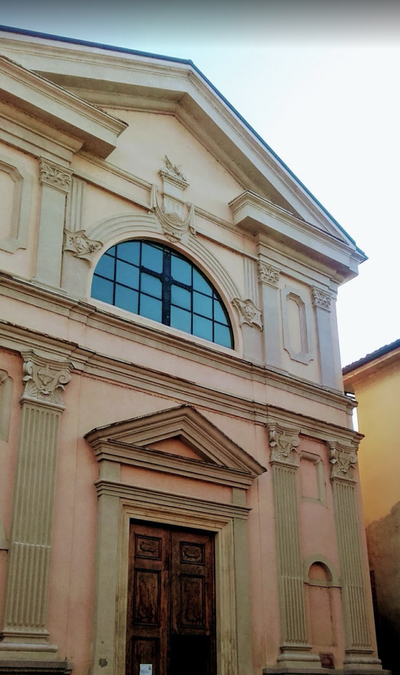
Chiesa San Luco CulturalChurch of San Luca
San Luca was built at the end of the 16th century according to the rules of the Council of Trent: a rectangular plan with a large apse, which identifies the single nave hall as the best way to ensure maximum visibility at the altar and thus promote a sense of unity for the faithful during worship. The wide and bright nave is covered by a barrel vault. The church is decorated with a dense decoration. In very poor condition, the church was closed to worship until 2000, when it was restored and reopened.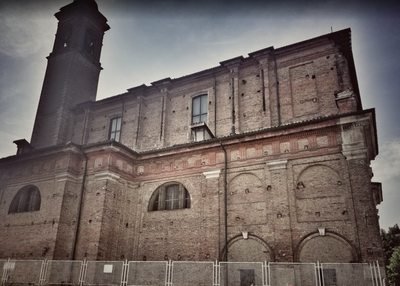
Santuario Santa Maria delle Grazie CulturalSanctuary of Santa Maria delle Grazie
Located outside Pavia on the Via Francigena, the church, dedicated to Santa Maria delle Grazie, was built in the 17th century on an oratory dedicated to the Virgin Mary. Near the church was built a Carmelite convent. In 1799, the convent was abolished and the church was first transformed into a stable and then into a saltpeter factory. The Bishop of Pavia Luigi Tosi bought the building, which was to be demolished, and reopened the church for worship in 1824. In April 1995, Pope John Paul II elevated it to the rank of a minor basilica. Inside the church are paintings and frescoes by Fiammenghini, Montalto and Giulio Cesare Procaccini, while the bell tower was completed in the mid-18th century.
Chiesa San Pietro Apostolo St ColumbanChurch of St. Peter the Apostle
The church and monastery of San Pietro in Verzolo were built, perhaps on an earlier building from the Lombard period. The monastery was managed by the monks of St. Colomban, founder of an abbey in Bobbio in 614 which was then a large and rich royal and imperial monastery fiefdom, in the 10th century as a Benedictine abbey. In July 929, during a transfer from Bobbio to Pavia, the relics of Saint Columbus were temporarily placed in the church of Saint Peter before being transported to the Basilica of Saint Michele Maggiore. In 1486, the Benedictines were replaced by the Cistercians of Chiaravalle, until 1798, when the monastery was abolished, while the church survived as a parish. Much of the church structure and adjacent buildings, such as the small cloister, are structured on the 11th century walls, made of many Roman bricks and pebbles recovered from the river. The facade was rebuilt in the second half of the 16th century, while the interior of the church was modified in the first half of the 18th century. Inside, above the altar (made in 1708) is a large painting by Giovanni Battista Sassi dated 1713 depicting Saint Bernard on his knees at the feet of the Virgin Mary.
Chiesa San Lazzaro CulturalChurch of San Lazzaro
The original church was built in 1157 with the nearby hospital, which is one of the oldest leper colony in Italy. The current building dates from the early 13th century and, despite its small size, represents the purest example of the Lombard Romanesque style, which has reached its highest degree of perfection here. The use of terracotta, with its refined style, reveals an extreme sensitivity and mastery that precedes the subsequent architectural cycle of the great 14th century churches. The interior, recently restored, preserves in the apse vast traces of Romanesque frescoes of great interest. The 15th century hospital building attached to the church is also interesting.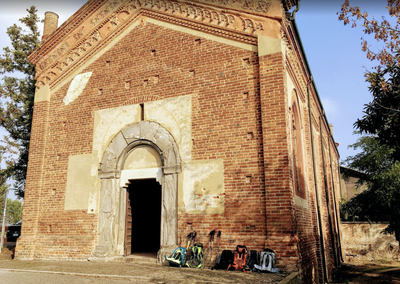
Chiesa San Giacomo CulturalChurch San Giacomo della Cerata
The small Romanesque chapel of San Giacomo della Cerreta preserves inside a precious collection of 15th century frescos. The beauty of this church and its original pictorial flowering are clues to the discovery of the meaning and value that this building once had, whose construction, in its current form, dates back to the first half of the 15th century. The oratory was a meeting point for people from different countries, united by a common devotion to Santiago and the Virgin Mary, a place of prayer, welcome and rest during the fatigue of the journey, solidarity and coexistence. Pavia and its countryside were indeed an almost obligatory point of passage for pilgrims who, according to the practice of faith that goes back to the 5th century, went to Galicia to visit the tomb of the apostle James, Rome or the Holy Land.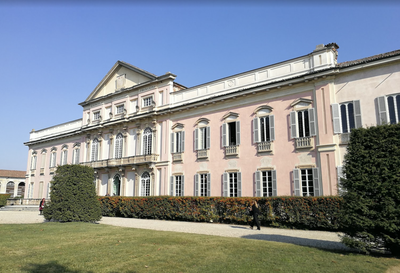
Castello HistoricalCastel of Belgioioso
The Castel of Belgioioso is a villa founded by Galeazzo Visconti around 1360, which is currently living thanks to the events organised by the company that resides there.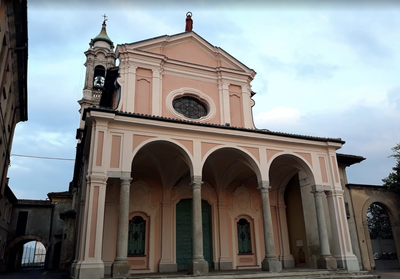
Chiesa Beata Vergine Maria CulturalChurch of the Blessed Virgine Maria Assunta
Beautiful baroque church.
Chiesa SS Nabore e Felice CulturalChurch of Saints Nabor and Felix
The present church dates from 1491 and the crypt from 1666. The old church mentioned in the texts in 1330 was already a chapel dedicated to Saints Nabor and Felix.
Torre civica HistoricalCivic tower
The civic tower, the only remnant of the castle from the late Middle Ages 1390, suffered extensive damage during the Napoleonic period and was destroyed in 1845.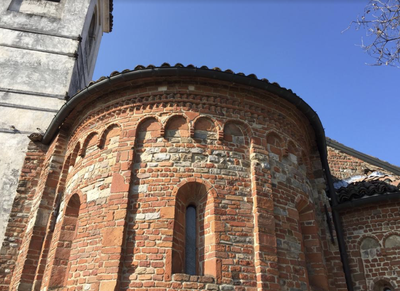
Basilica San Marcello in Montalino CulturalBasilica of San Marcello in Montalino
The Basilica of San Marcello in Montalino stands among the vineyards of a gentle hilly landscape. Built in Lombard Romanesque style in the 12th century in terracotta and sandstone, it has a gabled facade with two side windows and a three-nave interior supported by columns with figurative capitals and 14th century frescos. From 1893 the church is a national monument and is one of the oldest sacred buildings still present in the Oltrepò Pavese.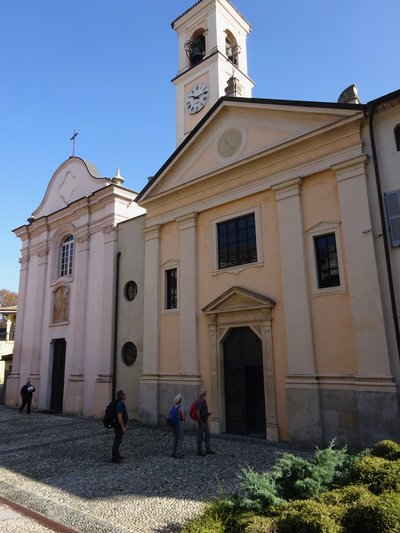
Chiesa San Michele - Amis St Colomban CulturalChurch of St Michael Archangel
The church of Montacuto, now Montù Beccaria, was built as a parish church under the title of Saint Michael the Archangel in August 1303 by Boniface VIII, at the request of Count Manfredi Beccaria.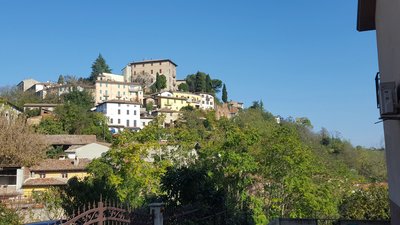
Castello di Montù Beccaria - Amis St Colomban HistoricalCastle of Montù Beccaria
The hill of Montù Beccaria called Castellazo has certainly been fortified. A college built in the 17th century by the Barnabiti replaced this castle using part of the walls, which today are almost impossible to identify; only a few traces of the old defensive structure remain at the foot of the walls (parts of towers, perhaps a keep, and moats).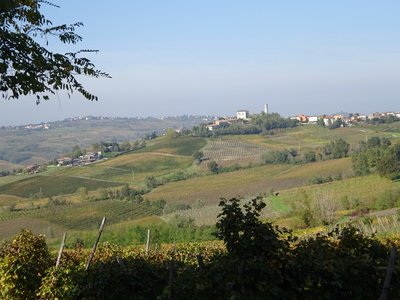
Donelasco - Amis St Colomban PanoramicPanoramic view towards Donelasco
A mountain village in a vineyard landscape.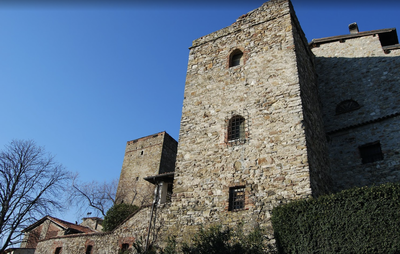
Chiesa Santa Maria e torre HistoricalChurch of Santa Maria del Carmine and tower
Soriasco, probably of Roman origin, was essentially a fortified village in the 11th century. The castle was destroyed in 1215/1216 by the Piacentini and was never rebuilt. One of these towers, built in the 12th century and restored in 1412, is today the largest fortified presence in the area.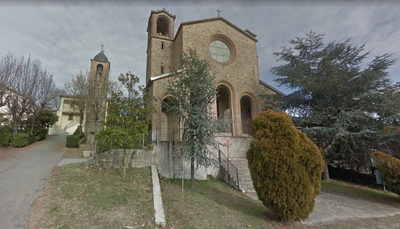
Chiesa Nostra Signora di Fatima CulturalChurch of Our Lady of Fatima
The church of Sant'Antonio Abate and Nostra Signora di Fatima was built in 1949.
Description
On the cathedral square, head south taking the pedestrian alley via dei Liguri:
- Turn left into the first street (via Gerolamo Cardano) and cross the Corso Strada Nuova, a shopping street that leads to the covered bridge over the Ticino. Continue in the same direction (Corso Giuseppe Garibaldi) until its end marked by a roundabout with a modern statue. Continuing in the same direction (viale Partigiani), the road crosses a canal, changes its name (viale Montegrappa) after a right turn and gradually exits the city. After the bridge, turn right on via Francana (Francigena signposting) to its end in the countryside and continue on the dirt road through the fields. Back in the inhabited area, observe the signs of the Francigena (red and white mark) which follows via Pietro Fondrini (rising street), via Montebolone (right) and via Grumello (right) before returning to nature. Continue on the bicycle / pedestrian track (signposting Francigena and via degli Abati: Abbots' way which also goes to Bobbio): it passes by a horse riding centre, follows the SS617, crosses the hamlets of Scarpone and Albertario before reaching a roundabout with the SS617.
- Take the opposite road towards San Leonardo (SP13), cross the village and continue until the crossroads towards San Giacomo: follow the Francigena signs on the right and go to Belgioioso (via Felice Cavallotti).
- Turn right into via Nenni (Francigena). At the end, turn right onto the SP9 (Francigena), pass the hamlet of Torre Negri but leave the Francigena at one kilometre which goes to the left (sign). Continue on SP9 to the village of Spessa (via Guglielmo Marconi). In the centre, turn right (piazza Scuri) then left (via Roma). At the end of the village, turn left to join the circulating SP199 and cross the bridge on the right side by a narrow pedestrian crossing. Continue until the roundabout at the end of the bridge.
- Follow the direction of Stradella and then the first track on the right to reach the Po river bank (Ciclovia del Po). Go up this bank to the hamlet of San Pietro. Find the SP200 to cross from Torrente Versa and enter the village of Portalbera. Before the church, turn left into Via De Amicis. At the roundabout, follow the second street on the left (via Liberta) which runs along the village. Exit again on the SP200 followed by Stradella after crossing the A21 motorway and a railway line. In Stradella, via Giuseppe Mazzini is followed to the crossroads with via Cesare Battisti (left).
- Turn left on via Cesare Battisti until the roundabout. Turn right (via Giuseppe di Vittorio) then take the first street on the left (viale Cervi followed by Via Brodolini) until its end at the exit of the city. Turn right on the dirt track that goes up the Torrente Versa valley in the vineyards. At the crossroads with the SP134, turn left onto this road towards the hills, cross the hamlet of Casa Bianca and then climb up to the top of the ridge line that dominates the Torrente Versa valley.
- At the roundabout at the entrance to Montu Beccaria, turn right to cross the village. In the centre, go down with the SP134 (via Roma) which crosses the SP43. At the crossroads, follow on the left the SP43 which goes up, turn right at the next crossroads (direction Poggiolo) and cross the hamlet of Castagnola. This small road follows the rising ridge line in the vineyards to Poggiolo. At the crossroads in the hamlet, turn right (direction Cerizzola) on SP172. Continue until the next crossroads (cemetery), turn left and go down to a pass then go up to the village of Torrone and the SP189. In the village, continue on SP189 (direction Santa Maria) and turn right.
- Go down towards Valdamonte and Case Nuove until you reach the entrance of Santa Maria de la Versa (sign). Turn left on SP42 towards Soriasco. In the village, continue the ascent on the same road to Torrazza and then Pizzofreddo. In the first houses of the village, turn right on SP153 (direction Golferenzo and Volpara). Cross these two villages following the main road. After Volpara, turn right onto SP40 which goes down towards Pometo.
- Cross the hamlet of Colombara, go up the bottom of the valley and cross the stream to reach SP201 at a pass on the opposite ridge under Canevino.
- Turn left and reach the destination following this new road which climbs into curves and then crosses Pometo lengthwise.
- Departure : Cathédrale de Pavie, Piazza del Duomo, 27000 Pavie
- Arrival : Church of Our Lady of Fatima, via della Chiesa, 27040 Pometo
- Towns crossed : Lombardia
Altimetric profile
Report a problem or an error
If you have found an error on this page or if you have noticed any problems during your hike, please report them to us here:
Close by16
- Information
- Information
- Restauration

